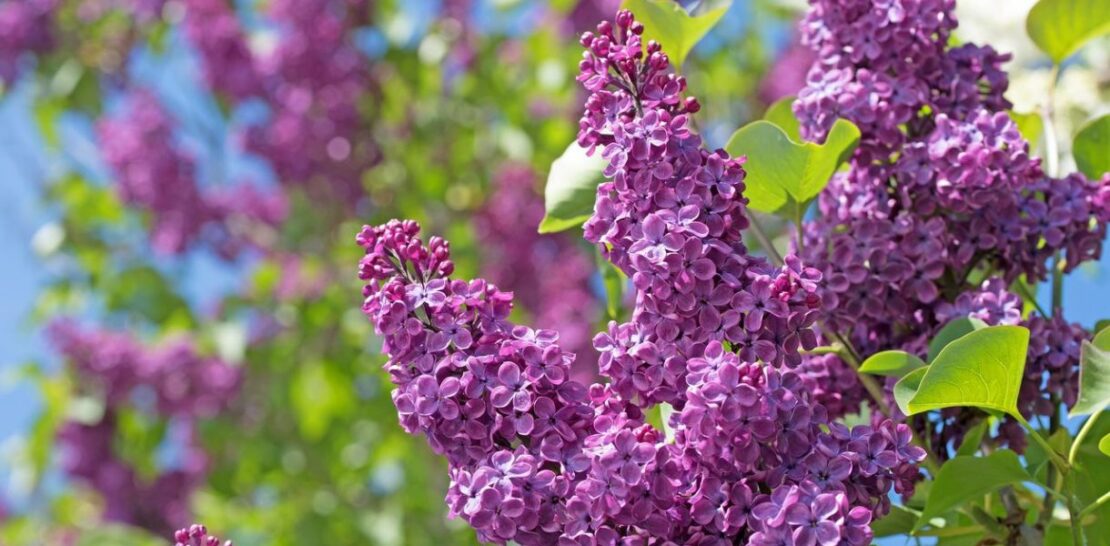As winter fades and temperatures rise, garden enthusiasts and horticulturists alike eagerly await the arrival of spring, the season of renewal and rebirth.
With the sun shining brighter and days growing longer, it’s the perfect time to cultivate a beautiful, color-filled garden that showcases the best that nature has to offer.
In this comprehensive guide, we will explore the seven best flowers to plant in your garden this April for a truly stunning spring display.
From vibrant tulips to delicate cherry blossoms, these flowers are sure to make your garden the envy of the neighborhood.
1. Tulips: The Quintessential Spring Bloom
When one thinks of spring flowers, tulips often come to mind first. These beautiful, easy-to-grow blooms are an essential addition to any April garden.
Tulip Varieties: There are over 3,000 registered varieties of tulips, divided into 15 categories based on factors such as flower shape, height, and blooming period. Some popular tulip varieties for April planting include:
- Darwin Hybrids: Known for their large, vibrant flowers and sturdy stems, Darwin Hybrids are perfect for creating a bold, colorful statement in your garden. Popular varieties include ‘Apeldoorn’, ‘Golden Apeldoorn’, and ‘Pink Impression’.
- Triumph Tulips: These mid-height tulips boast an extensive color range and are excellent for mass plantings, borders, and cut flower arrangements. ‘Prinses Irene’, ‘Negrita’, and ‘Jan Reus’ are popular choices.
- Double Early Tulips: Characterized by their dense, peony-like blooms, Double Early Tulips add a touch of elegance to your garden. ‘Foxtrot’, ‘Monte Carlo’, and ‘Peach Blossom’ varieties are highly sought-after.
Planting Tips: For the best results, plant tulip bulbs approximately 4-6 inches apart and 6-8 inches deep in well-draining soil. Ensure the pointed end of the bulb is facing upwards and water the planting area thoroughly. Tulips thrive in full sun to partial shade and should be planted in the fall for a spectacular spring display.
2. Daffodils: A Classic Spring Favorite
With their cheerful yellow hues and trumpet-like blooms, daffodils are a beloved symbol of spring and new life.
- Narcissus pseudonarcissus: Also known as the wild daffodil, this species is native to Western Europe. Its iconic yellow petals and central trumpet create a classic, natural look in your garden.
- Narcissus ‘Tête-à-tête’: This miniature daffodil variety is perfect for container gardens and small spaces, with each stem boasting multiple bright yellow flowers.
- Narcissus ‘Ice Follies’: With white petals and a pale yellow trumpet that fades to white as the flower matures, ‘Ice Follies’ daffodils add a touch of sophistication and elegance to your spring garden.
Planting Tips: Daffodil bulbs should be planted in the fall, 4-6 inches apart and 6 inches deep in well-draining soil. Ensure the pointed end of the bulb is facing upwards, and water the planting area thoroughly. Daffodils thrive in full sun to partial shade and are most effective when planted in groups or drifts for a natural, stunning visual effect.
3. Cherry Blossoms: A Delicate Spring Delight
Nothing says spring quite like the delicate, ethereal beauty of cherry blossoms. These ornamental trees create a magical atmosphere in any garden and are a must-have for springtime splendor.
Prunus serrulata: Often called Japanese flowering cherry, this species is known for its beautiful, fragrant blossoms that range in color from white to deep pink. Cultivars such as ‘Kanzan’, ‘Amanogawa’, and ‘Shirotae’ are popular choices for their stunning floral displays and striking architectural forms.
Planting Tips: Cherry blossom trees should be planted in a sunny, well-draining location with ample space to accommodate their mature size. Early springis the ideal time for planting, allowing the tree’s root system to establish before the hot summer months. When planting, dig a hole twice as wide and as deep as the root ball, and ensure the tree is positioned so that the graft union (the point where the trunk meets the roots) is approximately 2-3 inches above the soil level. Water the tree well after planting and continue to provide consistent moisture throughout the growing season.
4. Pansies: A Versatile and Vibrant Spring Staple
With their cheerful, expressive faces and wide variety of colors and patterns, pansies are a popular addition to April gardens.
Pansy Varieties: Pansies belong to the Viola genus and come in a diverse range of colors, sizes, and bloom types. Some popular pansy varieties for spring planting include:
- Viola x wittrockiana: Commonly known as the garden pansy, this species boasts large, colorful blooms and is well-suited for borders, containers, and bedding displays.
- Viola cornuta: Often referred to as horned violets or tufted pansies, these smaller pansies produce an abundance of dainty flowers throughout the spring, summer, and fall months.
Planting Tips: Pansies can be grown from seeds, transplants, or purchased bedding plants. For best results, plant pansies in early April in a well-draining soil with a pH between 5.8 and 6.2. Space plants 6-10 inches apart, depending on the mature size of the variety. Pansies thrive in full sun to partial shade and benefit from regular deadheading to encourage continuous blooming.
5. Primroses: A Charming and Colorful Spring Accent
Primroses are a charming addition to any spring garden, with their colorful, delicate blooms and lush, green foliage.
Primula vulgaris: This species, commonly known as the English primrose, features a rosette of pale yellow flowers atop a bed of deep green foliage. The English primrose is a popular choice for woodland gardens, rock gardens, and borders.
Primula auricula: Also known as the auricula primrose, this species is beloved for its striking, jewel-toned flowers and unique, rounded foliage. Auricula primroses are often featured in container gardens or displayed on traditional auricula theater shelves.
Planting Tips: Primroses can be grown from seeds, divisions, or purchased plants. Plant primroses in early spring, in enriched, well-draining soil with a pH between 6.0 and 6.5. Space plants 6-12 inches apart, depending on the variety, and provide consistent moisture throughout the growing season. Primroses thrive in partial shade, making them an excellent choice for shaded garden beds or woodland settings.
6. Hyacinths: A Fragrant and Elegant Spring Treasure
Hyacinths are an elegant, fragrant addition to any April garden, with their dense spikes of bell-shaped flowers and rich, sweet scent.
Hyacinth Varieties: Hyacinths are available in a range of colors, including white, blue, purple, pink, and yellow. Some popular varieties for spring planting include:
- ‘Blue Jacket’: This classic hyacinth variety features deep blue, fragrant flowers and is perfect for borders, containers, and forcing indoors.
- ‘Gypsy Queen’: With its unique salmon-apricot hue and lovely fragrance, ‘Gypsy Queen’ adds a touch of warmth and sophistication to your garden.
- ‘City of Haarlem’: This vintage hyacinth variety boasts soft, buttery yellow flowers and a delicate perfume, making it an elegant addition to any garden.
Planting Tips: Hyacinth bulbs should be planted in the fall, 4-6 inches apart and 6-8 inches deep in well-draining soil. Ensure the pointed end of the bulb is facing upwards, and water the planting area thoroughly. Hyacinths thrive in full sun to partial shade and are best planted in groups or clusters for maximum impact.
7. Anemones: A Delightful Spring Surprise
Anemones are a delightfulspring surprise, with their vibrant, poppy-like blooms and graceful, fern-like foliage.
Anemone Varieties: Anemones belong to the Ranunculaceae family and can be found in a wide range of colors and forms. Some popular anemone varieties for April planting include:
- Anemone blanda: Commonly known as Grecian windflowers, these low-growing anemones feature daisy-like flowers in shades of blue, pink, and white. They make an excellent ground cover or addition to rock gardens.
- Anemone coronaria: Often referred to as poppy anemones, these vibrant flowers come in a variety of colors, including red, pink, purple, and white. They are perfect for borders, containers, and cut flower arrangements.
Planting Tips: Anemone bulbs, also known as tubers, should be planted in the fall or early spring, depending on the variety. Soak the tubers in water for 12-24 hours before planting to encourage faster growth. Plant tubers 2-3 inches deep and 4-6 inches apart in well-draining soil. Anemones thrive in full sun to partial shade and should be watered regularly throughout the growing season.
In conclusion, spring is the perfect time to rejuvenate your garden and fill it with an array of colorful, fragrant blooms. By incorporating these seven delightful flowers – tulips, daffodils, cherry blossoms, pansies, primroses, hyacinths, and anemones – into your April planting plans, you’re sure to create a beautiful, captivating display that will bring joy and inspiration all season long. So, roll up your sleeves, grab your gardening tools, and prepare to embark on a journey of horticultural delight as you transform your garden into a blooming wonderland this spring.




